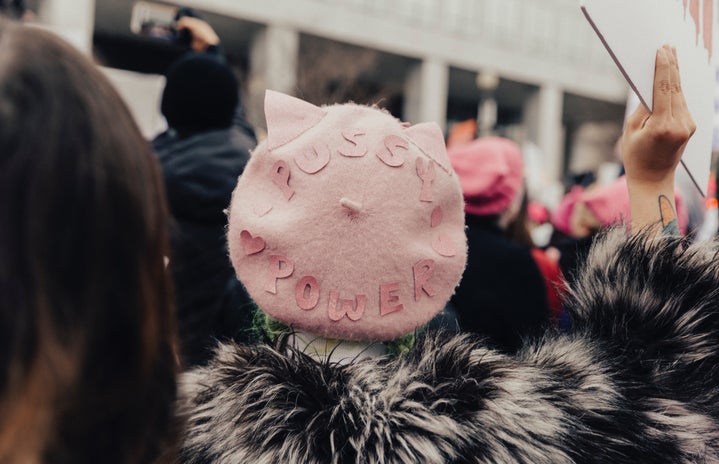On warm afternoons in late spring, Sarah Murphy, of Middletown NJ, likes to take her dog on walks along Sandy Hook beach. Since she got her license a few years ago, she enjoys taking her lab mix to the beach and watching the sunset while listening to music.
One particular day however, while on her walk, something washed up on the shore and caught her eye. “I remember seeing a plastic bottle and I didn’t think much of it,” she says, “and as I went to pick it up, I noticed a few other pieces of plastic just ahead of that.” She kept on going and picked up each bottle she saw, her patience wearing thin. “There was even an old toothbrush. I honestly couldn’t believe what I was seeing,” she says.
With the world’s recent emphasis to get rid of harmful plastics in our oceans, New Jersey beaches are figuring out how to battle this issue here at home. Clean Ocean Action, a non-profit organization based along the Sandy Hook Bay, has been dedicated to tackling ocean pollution since 1984. The organization’s goal is to improve the degraded water quality of the marine waters off the New Jersey/New York coast.
New Jersey native Alison McCarthy currently works as the Beach Sweeps Coordinator for Clean Ocean Action and has been with the organization for a year and a half now. “The beach sweeps take place two times a year, and it’s my job to reach out to all of the towns that we work with year after year,” she says, “I reach out to them and ask for permission to hold a beach clean up.”
These clean ups take a massive group effort, and according to McCarthy, they take place in 60-70 different locations along the Jersey Shore on the same day. In order for the event to run smoothly, McCarthy checks in with a volunteer beach captain who is chosen for each location.
“We provide the bags and the data cards for all of our beach captains, and I make sure they get all the stuff they need,” she says.
Once the beach sweep begins, each volunteer spends a few hours out on the beach picking up trash and categorizing what they find with the help of their data card. As the event comes to an end, McCarthy says that the beach captains are responsible for collecting those data cards and mailing them in to Clean Ocean Action. McCarthy then enters the information into the Clean Ocean Action Beach Sweep Database.
The Clean Ocean Action website has been collecting Annual Beach Sweep Reports since 2003. In the most recent 2018 report, numbers are compared between the most commonly found items that have increased within a year, and it is no surprise that plastic is at the top of this list. According to the report, the 2018 beach sweep saw a 35.05% increase in plastic pieces on the Jersey Shore, compared to 2017.
Image source.
While, as consumers, we have been told not to use straws and to ditch plastic water bottles, exactly what is the science behind plastic and its harmful effects on marine life? “Plastic is a huge concern in the ocean for a couple of different reasons; the primary reason is because it doesn’t break down,” McCarthy states, “all that it’s doing is breaking into smaller and smaller pieces, through wave action and through being exposed to sunlight, and we end up with microplastics.”
According to McCarthy, the smaller these pieces of plastic get, the more likely they will get consumed by something, somewhere along the food chain. “There are all different studies showing that things as small as mollusks, little oysters and plankton are consuming all these microplastics, and of course that is going to impact the rest of the food chain,” McCarthy explains.
Once these microplastics are eaten and passed through the food chain, new contaminantes are introduced to marine life that otherwise would not have been there. “It basically is finding its way into living organisms, and it’s harmful because plastic collects toxins within the marine environment,” says McCarthy.
According to oceancrusaders.org, a charity organization that specializes in large scale waterway cleaning, a key component in making plastic is petroleum, which is both non-renewable and non-biodegradable. “All those critters that are consuming the plastic are actually consuming all those toxins, but it’s also dangerous in the sense that it’s physically harmful,” McCarthy states.
The plastic that makes its way into our oceans is only growing in numbers. According to oceancrusaders.org, there are about 5.25 trillion pieces of plastic debris in the ocean all together. About 100,000 different marine creatures around the world die from plastic every year, as well as 1 million sea birds.
When it comes to getting started on the fight against ocean pollution, McCarthy says that the first steps we must take are within ourselves. “First and foremost, there are a lot of things you can do in your personal life, especially when it comes to plastics,” says McCarthy, “Trying to make changes in your everyday life is really a lot more powerful than it sounds like; you can think that you’re just one person and it might not make a huge difference, but it really can.”
McCarthy recommends switching to a reusable water bottle and remembering to bring reusable bags when you go to the grocery store. Less plastic in your life means less plastic in our oceans, and when you restrict your use on plastic items, the people around you will start to take notice. “Of course when you do this stuff, and your peers see you doing it too, it kind of becomes the norm. That is really where the impact is,” says McCarthy.
Plastic is not the only culprit threatening marine life. As of late, the folks at Clean Ocean Action have been focusing their attention on preventing the construction of the Williams NESE Pipeline, a proposed 23 mile natural gas pipeline beginning around Old Bridge, NJ, cutting through Raritan Bay, and eventually ending up by Rockaway Beach, NY.
According to McCarthy, this pipeline could potentially have severe impacts on the wellbeing of both animals and people who live in these areas. “To install it, they would be disturbing all the sediments that are at the bottom of Raritan Bay, which is full of contaminated sediments from many years of industry going up stream,” says McCarthy. The residents who make a living clamming and fishing on Raritan Bay would be heavily affected by the construction of this pipeline.
McCarthy states that neither New York nor New Jersey is intending on using the natural gas that this pipeline will produce. “There really is no benefit to anyone here other than the companies that would be utilizing the natural gas and making profit off of it,” she says. Clean Ocean Action has responded to the proposed project by delivering a petition and organizing rallies in Trenton, NJ.
For more information on the Williams NESE Pipeline, as well as the beach sweeps and other programs, follow Clean Ocean Action on social media to stay updated on all local water pollution issues. The more talked about these issues are, the easier it will be to make a significant change. “Sign the petitions, call the governor, call your legislators and elected officials,” says McCarthy, “It’s really important to be engaged and take action.”



